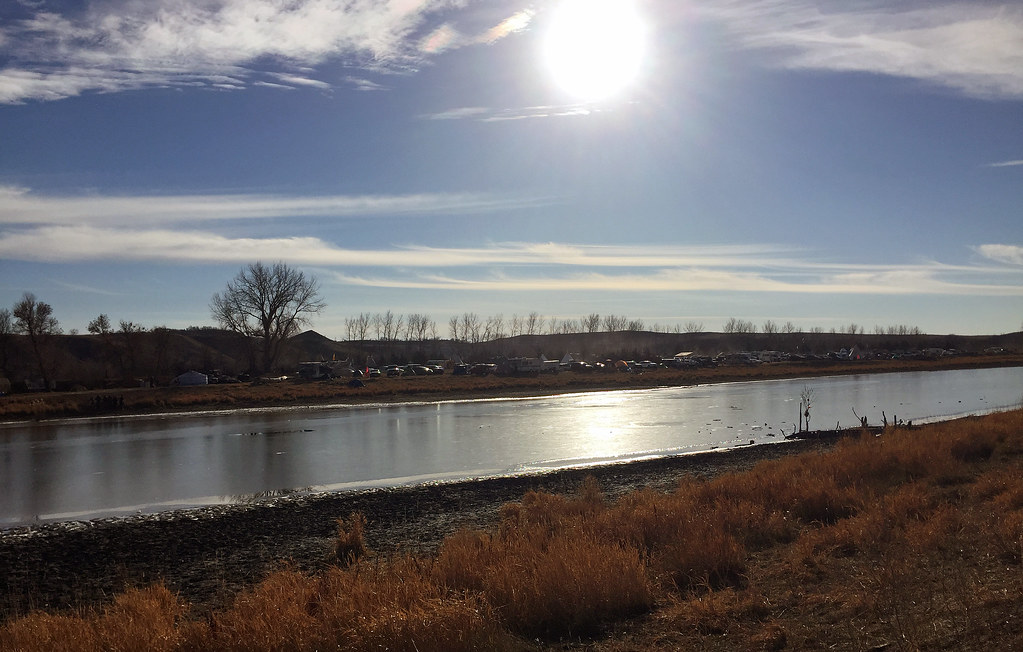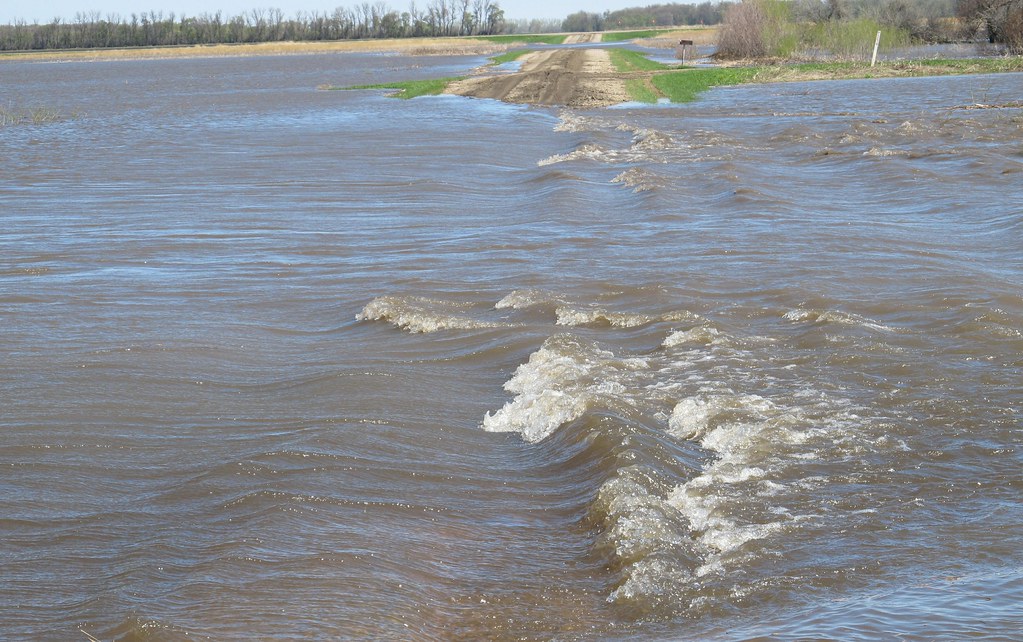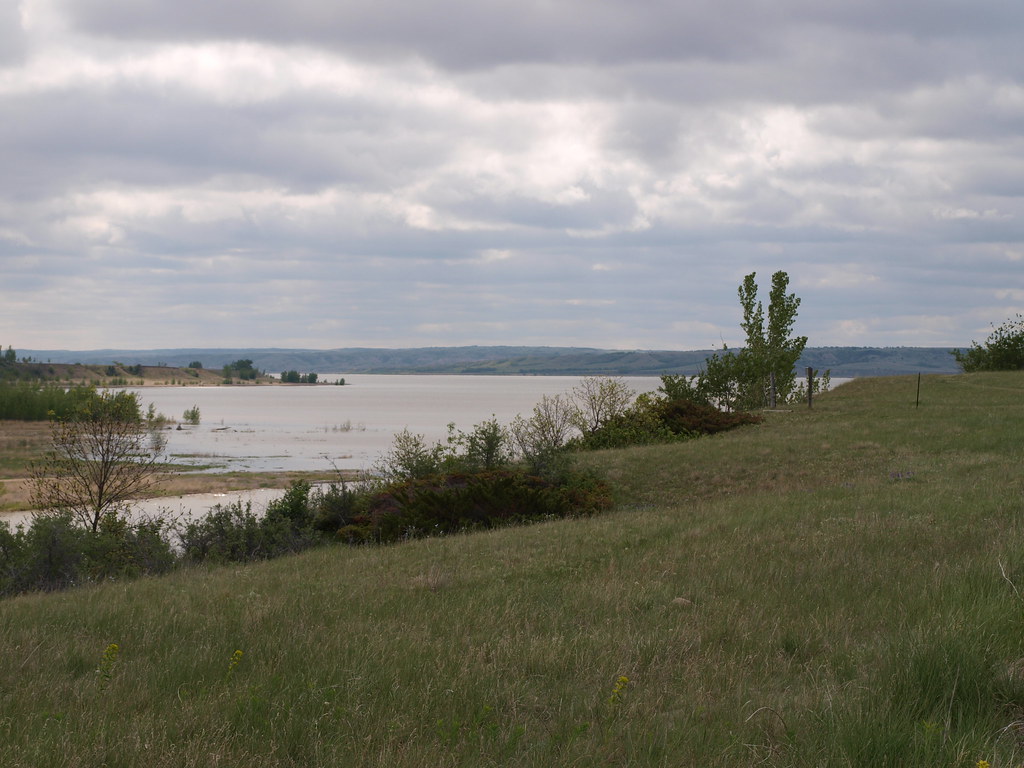Amid the vast prairies and the quiet resilience of its communities, North Dakota tells a story not just in its open landscapes but also in the gentle flow of its rivers and the serene presence of its lakes. The Roughrider State, celebrated for its frontier spirit and natural beauty, cradles within its embrace a lesser-known treasure – a network of waterways that mirrors its legacy of exploration and determination.
Like whispered tales around a campfire, North Dakota’s rivers and lakes carry stories of survival, trade, and the unbreakable bond between its people and the land. In this article, we embark on a journey that traces the pathways of North Dakota’s rivers and reflects upon the tranquil depths of its lakes.
Join us as we unveil the significance of these aqueous narratives, uncovering their role in shaping the state’s identity, culture, and livelihoods, and revealing how water has carved its mark onto the very essence of the Roughrider State.
Printable North Dakota Lakes and Rivers Map

Rivers
Cannonball River

The Cannonball River is a 135-mile-long tributary of the Missouri River in southwestern North Dakota that rises in the Little Missouri National Grassland, in the badlands north of Amidon in northern Slope County.
It flows ESE past New England, Mott, and Burt, and is joined by Cedar Creek approximately 15 miles southwest of Shields before flowing northeast, past Shields, forming the northern border of Sioux County and the Standing Rock Indian Reservation. It joins the Missouri in Lake Oahe near Cannon Ball, and the cannonball concretions found in the vicinity of this river are the source of its name.
Sheyenne River
The Sheyenne River is one of the major tributaries of the Red River of the North, meandering 591 miles across eastern North Dakota. The river begins about 15 miles north of McClusky and flows generally eastward before turning south near McVille.
The southerly flow of the river continues through Griggs and Barnes counties before it turns in a northeastward direction near Lisbon, forming the 27-mile-long Lake Ashtabula behind the Baldhill Dam north of Valley City, which was constructed in 1951 for flood control by the US Army Corps of Engineers. The Sheyenne River is classified as a “perch river,” and from Kindred, the river flows north-northeastward through the fertile plains of the Red River Valley.
Red River

The Red River is a river in the north-central United States and central Canada, originating at the confluence of the Bois de Sioux and Otter Tail rivers between the U.S. states of Minnesota and North Dakota, flowing northward through the Red River Valley, forming most of the border of Minnesota and North Dakota and continuing into Manitoba.
It empties into Lake Winnipeg, whose waters join the Nelson River and ultimately flow into Hudson Bay. The Red River is about 885 kilometers long, and several urban areas have developed on both sides of the river, including the city of Winnipeg in Canada, as well as the Fargo-Moorhead and Grand Forks–East Grand Forks metropolitan areas, both of which straddle the North Dakota–Minnesota border.
Heart River
The Heart River is a tributary of the Missouri River, approximately 180 miles long, in western North Dakota. The river rises in the prairie country of Billings County, in the Little Missouri National Grassland near the south unit of Theodore Roosevelt National Park, and flows generally eastwardly through Stark County to Gladstone, past Belfield and South Heart, through the Patterson Reservoir and past Dickinson.
It is joined by the Green River at Gladstone, and turns east-southeastward into Grant County, passing through Lake Tschida, which is formed by the Heart Butte Dam, before turning northeastward into Morton County, where it joins the Missouri River at Mandan.
Souris River
The Souris River, also known as the Mouse River, is approximately 435 miles long and drains about 23,600 square miles in Canada and the United States. Rising in southern Saskatchewan in the Yellow Grass Marshes north of Weyburn, the river wanders southeast into the U.S. through North Dakota beyond Minot to its most southern point at Velva, and then back north into Canada in southwestern Manitoba.
At the end of the last ice age, the rapid draining of former Glacial Lake Regina eroded a large channel that is now occupied by the much smaller contemporary Souris River, and much of the drainage basin is fertile silt and clay deposited by another former glacial lake, Lake Souris.
James River
The James River, also known as the Jim River or the Dakota River, is a tributary of the Missouri River, approximately 710 miles long, draining an area of 20,653 square miles in the U.S. states of North Dakota and South Dakota. The river provides the main drainage of the flat lowland area of the Dakotas between the two plateau regions known as the Missouri Coteau and the Coteau des Prairies.
The James drops approximately 5 inches per 1 mile, and this low gradient sometimes leads to reverse flow, which happens most frequently north of Huron, South Dakota. The river arises in Wells County, North Dakota, and flows briefly east towards New Rockford, then generally SSE through eastern North Dakota, past Jamestown, where it is first impounded by a large reservoir (the Jamestown Dam), and then joined by the Pipestem River.
Knife River
The Knife River is a tributary of the Missouri River, approximately 120 mi long, in North Dakota. It rises in west central North Dakota, in the Killdeer Mountains in Dunn County, and flows east, joining the Missouri north of Stanton, at the Knife River Indian Villages National Historic Site.
The river consistently floods after spring melting but is two to three magnitudes lower during the summer months, and much of the terrain surrounding the river valley still remains in native grasslands, supporting many species of wildlife.
Wild Rice River
The Wild Rice River is a tributary of the Red River of the North, approximately 251 miles long, in southeastern North Dakota. It rises as an intermittent stream in Brampton Township in southeastern Sargent County and initially flows generally eastwardly in a winding course through Sargent and Richland counties. It travels through the Tewaukon National Wildlife Refuge and past the towns of Cayuga, Mantador, and Great Bend.
Past Great Bend, the river turns northward, and from west of the city of Wahpeton, it generally parallels the Red River in a winding channel at a distance of approximately 3 to 7 miles. Despite its length, it is a fairly small stream, flowing at an average rate of approximately 100 cubic feet per second, and the river was so named for the former abundance of wild rice along its course.
Des Lacs River

The Des Lacs River is a river in central North America that flows through Saskatchewan and North Dakota. It originates in southeastern Saskatchewan and joins the Souris River, of which it is the primary tributary, in Burlington, North Dakota.
The Des Lacs River was formed by catastrophic meltwater release from two large glacial lakes about 10,000 years ago, and it is perennial, exhibiting many old oxbow lakes, meander scars, and relict channels. However, with the settlement of the region, the Des Lac River was significantly modified by drainage and channelization, and by the construction of many low-head dams along the river, resulting in few natural riverine wetlands remaining.
Maple River
The Maple River is a tributary of the Sheyenne River, about 198 miles long, in the Red River Valley of eastern North Dakota in the United States. It begins as an intermittent stream near the town of Finley in Steele County and flows generally southward to Enderlin, where it turns to the northeast and flows past Mapleton.
The Maple River flows through Steele, Barnes, Cass, and Ransom counties, and at Enderlin, it collects a short tributary known as the South Branch Maple River, which flows for its entire length in northern Ransom County.
Goose River
The Goose River is a 179-mile-long tributary of the Red River of the North in North Dakota. It is crossed by the Northwood Bridge and the Caledonia Bridge, both listed on the National Register of Historic Places. Via the Red River, Lake Winnipeg, and the Nelson River, the Goose River is part of the watershed of Hudson Bay.
Forest River
The Forest River is an 81.0-mile-long tributary of the Red River of the North in eastern North Dakota. It rises in Walsh County and flows southeast and east, past the towns of Fordville and Minto, and forms a confluence with the Red approximately 40 miles north of Grand Forks. Despite its length, it is a relatively small stream, and it provides habitat for a variety of aquatic species.
Park River
The Park River is a tributary of the Red River of the North in North Dakota. The name is derived from brush corrals built by Native Americans on the banks of the river, called “buffalo parks” by early explorers. These corrals were used in a form of hunting in which buffalo would be driven into them and over the steep river banks in order to kill or injure them. Despite its historical significance, the Park River is a relatively small stream, providing habitat for a variety of aquatic species.
Tongue River

The Tongue River is a 90.4-mile-long tributary of the Pembina River in northeastern North Dakota in the United States. It rises in eastern Cavalier County and flows in a direct course east-northeast into Pembina County, passing the towns of Cavalier, Neche, and Bathgate.
The river passes through Icelandic State Park, where Renwick Dam causes it to form Lake Renwick, and below the dam, foot trails follow the river in the Gunlogson Arboretum Nature Preserve. Despite its length, the Tongue River is a relatively small stream, draining an area of the prairie country near the Canada–US border in the extreme northeast corner of the state in the watershed of the Red River.
White Earth River
The White Earth River is a tributary of the Missouri River, approximately 50 mi long, in northwestern North Dakota in the United States. It rises in the plains of southeastern Divide County, approximately 10 mi east of Wildrose, and flows east and south, through Mountrail County, before joining the Missouri in Lake Sakakawea.
The White Earth River was included as part of the western boundary of the Minnesota Territory, but it was unknown at that time that the river’s source was not north of the international border. Despite its length, the White Earth River provides a habitat for a variety of aquatic species.
Lakes
Lake Sakakawea

Lake Sakakawea is the largest man-made lake located entirely within North Dakota, impounded in 1953 by Garrison Dam, a U.S. Army Corps of Engineers dam located in the Missouri River basin in central North Dakota.
Named for the Shoshone-Hidatsa woman Sakakawea who accompanied the Lewis and Clark Expedition, it is the second largest lake in the United States by area after Lake Oahe, and the third largest in the United States by volume, after Lake Mead and Lake Powell. The lake’s width averages between 2–3 miles, with a maximum of 14 miles at Van Hook Arm, and it is located within the counties of Dunn, McKenzie, McLean, Mercer, Mountrail, and Williams.
Devils Lake

Devils Lake is the largest natural body of water and the second-largest body of water in North Dakota after Lake Sakakawea. It can reach a level of 1,458 ft before naturally flowing into the Sheyenne River via the Tolna Coulee.
The cities of Devils Lake and Minnewaukan take their name from the lake, as does the Spirit Lake Reservation, which is located on the lake’s southern shores. On June 27, 2011, it reached an unofficial historical high elevation of 1,454.3 ft. Despite its name, Devils Lake is a popular destination for fishing, boating, and other recreational activities.
Stump Lake
Stump Lake is a naturally formed lake located in Nelson County, North Dakota, covering 15,742.4 acres, with an average depth of 29.7 feet and a maximum depth of 73.3 feet. It is stocked by the North Dakota Department of Natural Resources with Walleye, Yellow Perch, and Northern Pike.
The lake’s waters have risen 45 feet in the last few years, and are now at the levels of neighboring Devils Lake. Stump Lake Park is found around the lake and is solely dedicated to it. It is the location of the Old Settler’s Pavilion, listed on the U.S. National Register of Historic Places, which has been threatened by the rising water level.
Lake Ashtabula

Lake Ashtabula is a riverine lake oriented north to south, about 27 miles long, and is named after the Native American word meaning “Fish River.” It has a water surface area of 5,234 acres, a maximum capacity of 156,000 acre-feet, and is popular for recreation, containing walleye, northern pike, white bass, yellow perch, and black bullheads. The Corps of Engineers maintains seven recreation areas around the lake, making it a popular spot for camping, fishing, and other outdoor activities.
Lake Metigoshe
Lake Metigoshe is a 1,544-acre lake located in both Bottineau County, North Dakota, and the Rural Municipality of Winchester, Manitoba, with a maximum depth of 24 feet. The majority of the lake is within the United States, with only the northernmost tip in Canada.
The Lake Metigoshe State Park encompasses about a quarter of the total lake’s shoreline, offering a variety of recreational activities such as swimming, canoeing, sailing, water-skiing, camping, and picnicking. The Skinautiques waterskiing club is also located on the lake and is the only international waterskiing club in the United States.

